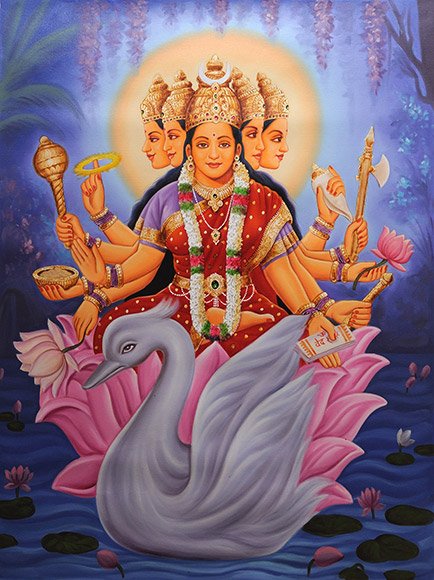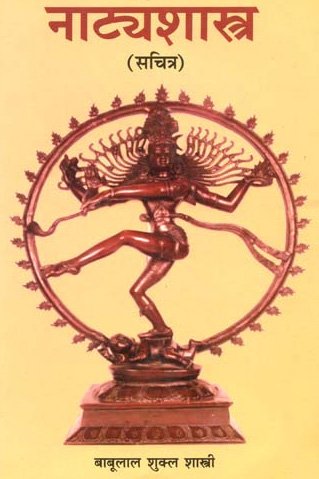Pravrittaka, Pravṛttaka: 7 definitions
Introduction:
Pravrittaka means something in Hinduism, Sanskrit. If you want to know the exact meaning, history, etymology or English translation of this term then check out the descriptions on this page. Add your comment or reference to a book if you want to contribute to this summary article.
The Sanskrit term Pravṛttaka can be transliterated into English as Pravrttaka or Pravrittaka, using the IAST transliteration scheme (?).
In Hinduism
Chandas (prosody, study of Sanskrit metres)
Source: Shodhganga: a concise history of Sanskrit Chanda literaturePravṛttaka (प्रवृत्तक) refers to one of the thirty-four mātrāvṛtta (quantitative verse) mentioned in the Garuḍapurāṇa. The Garuḍapurāṇa also deals with the science of prosody (e.g., the pravṛttaka) in its six chapters 207-212. The chapters comprise 5, 18, 41, 7 and 9 verses respectively.

Chandas (छन्दस्) refers to Sanskrit prosody and represents one of the six Vedangas (auxiliary disciplines belonging to the study of the Vedas). The science of prosody (chandas-shastra) focusses on the study of the poetic meters such as the commonly known twenty-six metres mentioned by Pingalas.
Natyashastra (theatrics and dramaturgy)
Source: Wisdom Library: Nāṭya-śāstraPravṛttaka (प्रवृत्तक, “personal business”) refers to one of the five varieties of the introduction (āmukha), according to the Nāṭyaśāstra chapter 22. Accordingly, “the introduction in which the director speaks on some business in hand, and taking cue from this (lit. with its help) a character enters the stage, it is called the personal business (pravṛttaka)”. Āmukha represents one of the four varieties of the verbal style (bhāratī),while Bhāratī refers to one of the four styles (vṛtti) employed in a dramatic production.

Natyashastra (नाट्यशास्त्र, nāṭyaśāstra) refers to both the ancient Indian tradition (shastra) of performing arts, (natya—theatrics, drama, dance, music), as well as the name of a Sanskrit work dealing with these subjects. It also teaches the rules for composing Dramatic plays (nataka), construction and performance of Theater, and Poetic works (kavya).
Languages of India and abroad
Sanskrit dictionary
Source: DDSA: The practical Sanskrit-English dictionaryPravṛttaka (प्रवृत्तक).—
1) Entrance on the stage.
2) Name of a Mātrā-metre; यदा समावोजयुग्मकौ पूर्य्ययौ भवति तत् प्रवृत्तकम् (yadā samāvojayugmakau pūryyayau bhavati tat pravṛttakam) V. Ratna.
Derivable forms: pravṛttakam (प्रवृत्तकम्).
Source: Cologne Digital Sanskrit Dictionaries: Edgerton Buddhist Hybrid Sanskrit DictionaryPravṛttaka (प्रवृत्तक).—adj. (= Sanskrit pravṛtta), who have set out, embarked (on, composition): buddhānāṃ…lokānugraha-°tta- kānām Avadāna-śataka i.16.10 (prose; in same cliché, °ttānām i.30.8); that took place, were engaged in, °ttakāni chandakāni Avadāna-śataka i.269.8 (prose; perhaps specifying ka, § 22.39).
Source: Cologne Digital Sanskrit Dictionaries: Monier-Williams Sanskrit-English Dictionary1) Pravṛttaka (प्रवृत्तक):—[=pra-vṛttaka] n. = pravartaka n., [Pratāparudrīya]
2) [v.s. ...] Name of a metre, [Colebrooke]
[Sanskrit to German]
Sanskrit, also spelled संस्कृतम् (saṃskṛtam), is an ancient language of India commonly seen as the grandmother of the Indo-European language family (even English!). Closely allied with Prakrit and Pali, Sanskrit is more exhaustive in both grammar and terms and has the most extensive collection of literature in the world, greatly surpassing its sister-languages Greek and Latin.
See also (Relevant definitions)
Partial matches: Vrittaka, Pra.
Starts with: Pravrittakarman, Pravrittakarmman, Pravrittakavritta.
Full-text: Pravartaka, Amukha, Ullopyaka.
Relevant text
Search found 3 books and stories containing Pravrittaka, Pravṛttaka, Pravrttaka, Pra-vrittaka, Pra-vṛttaka, Pra-vrttaka; (plurals include: Pravrittakas, Pravṛttakas, Pravrttakas, vrittakas, vṛttakas, vrttakas). You can also click to the full overview containing English textual excerpts. Below are direct links for the most relevant articles:
Dasarupaka (critical study) (by Anuru Ranjan Mishra)
Part 8 - Styles (vṛtti) of the Bhāṇa < [Chapter 2 - Bhāṇa (critical study)]
Part 8 - Styles (vṛtti) of the Prakaraṇa < [Chapter 10 - Prakaraṇa (critical study)]
Part 8 - Style (Vṛtti) of the Prahasana < [Chapter 3 - Prahasana (critical study)]
The Agni Purana (by N. Gangadharan)
Chapter 338 - Description of the different types of Drama (nāṭaka)
Natyashastra (English) (by Bharata-muni)